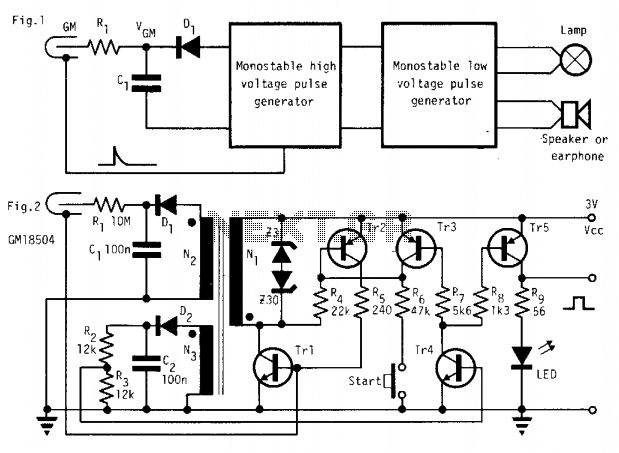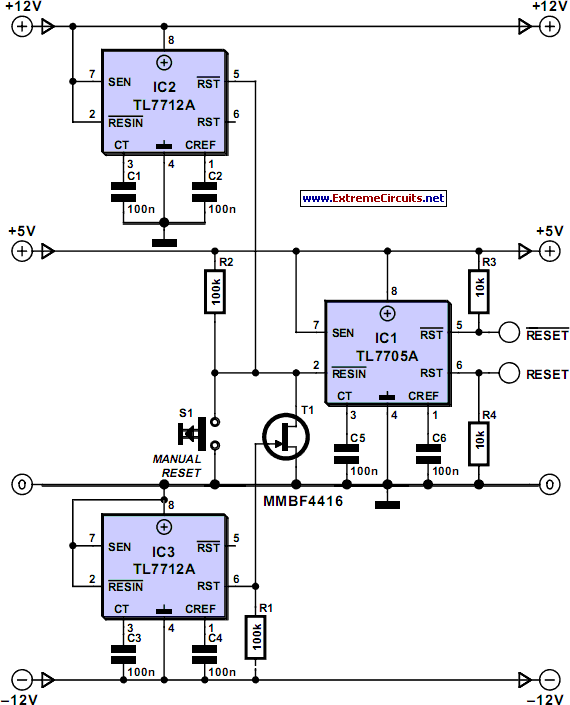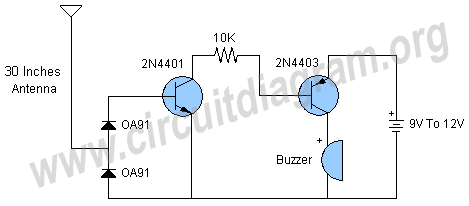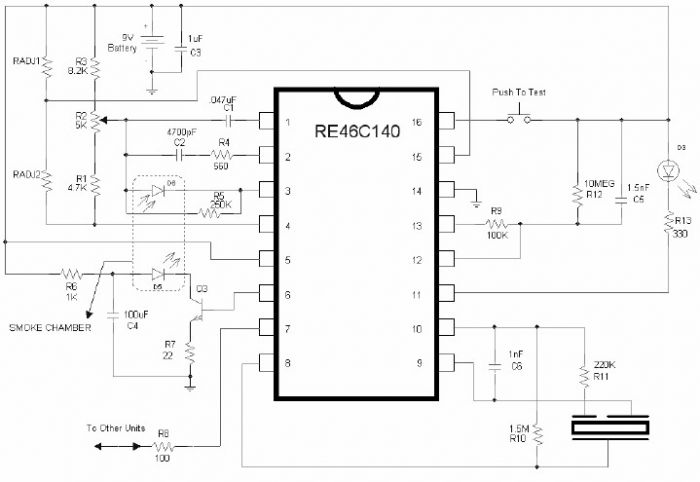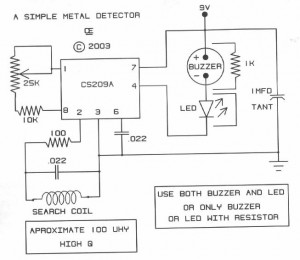
SensorCircuit Of Lie Detector
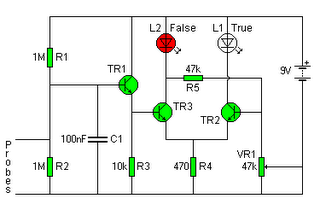
The following circuit illustrates a Lie Detector Circuit Diagram. Features include a capacitor that eliminates the 50Hz induced mains hum present in the circuit.
The Lie Detector Circuit operates on the principle of measuring physiological responses, typically galvanic skin response (GSR), to determine truthfulness. The circuit is designed to detect minute changes in skin conductivity, which can vary with emotional states.
Key components include a high-impedance operational amplifier, which amplifies the small variations in skin resistance. A capacitor is strategically placed in the circuit to filter out 50Hz noise commonly introduced by AC mains, ensuring that the readings are accurate and not influenced by external electromagnetic interference.
The circuit typically includes a voltage divider configuration that allows for the measurement of skin resistance. When a subject experiences stress or anxiety, their skin resistance decreases, leading to a measurable change in the output voltage of the operational amplifier.
Additional components may include a microcontroller for data logging and analysis, as well as visual indicators such as LEDs to provide immediate feedback on the subject's physiological state. The output can be further processed to produce a more comprehensive analysis of the subject's responses, enhancing the overall effectiveness of the lie detection process.
Overall, the Lie Detector Circuit is a sophisticated assembly of electronic components that work together to provide insights into human emotional responses, making it a valuable tool in various applications, including psychological research and security screenings.The following circuit shows about Lie Detector Circuit Diagram. Features: capacitor and removes the 50Hz induced mains hum that is found on a .. 🔗 External reference
The Lie Detector Circuit operates on the principle of measuring physiological responses, typically galvanic skin response (GSR), to determine truthfulness. The circuit is designed to detect minute changes in skin conductivity, which can vary with emotional states.
Key components include a high-impedance operational amplifier, which amplifies the small variations in skin resistance. A capacitor is strategically placed in the circuit to filter out 50Hz noise commonly introduced by AC mains, ensuring that the readings are accurate and not influenced by external electromagnetic interference.
The circuit typically includes a voltage divider configuration that allows for the measurement of skin resistance. When a subject experiences stress or anxiety, their skin resistance decreases, leading to a measurable change in the output voltage of the operational amplifier.
Additional components may include a microcontroller for data logging and analysis, as well as visual indicators such as LEDs to provide immediate feedback on the subject's physiological state. The output can be further processed to produce a more comprehensive analysis of the subject's responses, enhancing the overall effectiveness of the lie detection process.
Overall, the Lie Detector Circuit is a sophisticated assembly of electronic components that work together to provide insights into human emotional responses, making it a valuable tool in various applications, including psychological research and security screenings.The following circuit shows about Lie Detector Circuit Diagram. Features: capacitor and removes the 50Hz induced mains hum that is found on a .. 🔗 External reference
Warning: include(partials/cookie-banner.php): Failed to open stream: Permission denied in /var/www/html/nextgr/view-circuit.php on line 713
Warning: include(): Failed opening 'partials/cookie-banner.php' for inclusion (include_path='.:/usr/share/php') in /var/www/html/nextgr/view-circuit.php on line 713
